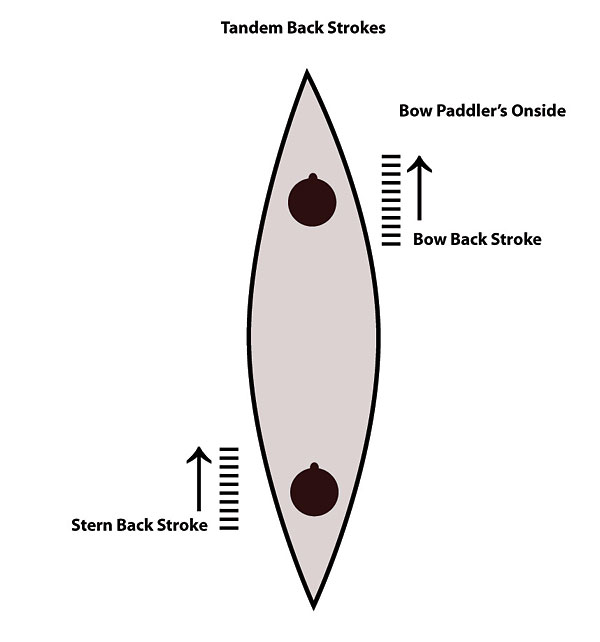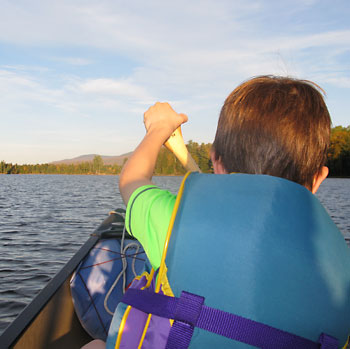 If you’ve never had a lesson or read a book about paddling a canoe, but learned by doing, odds are you’re doing something wrong. Put bluntly, paddling a canoe is not intuitive. Except for folks doing the “Minnesota Switch,” otherwise known as the “sit and switch” technique, controlling a canoe happens with the paddle on one side of the canoe.
If you’ve never had a lesson or read a book about paddling a canoe, but learned by doing, odds are you’re doing something wrong. Put bluntly, paddling a canoe is not intuitive. Except for folks doing the “Minnesota Switch,” otherwise known as the “sit and switch” technique, controlling a canoe happens with the paddle on one side of the canoe.
If you're paddling a tandem canoe, the bow (front) paddler paddles on one side and the stern (back) paddler paddles on the opposite side. Changing sides or hand positions is not done, unless there is a need to rest tired muscles, perhaps every 15 to 20 minutes or so.
As a solo paddler, the same rule applies. Making the boat go straight or turn right or left is accomplished by paddling on just one side. If this doesn’t sound familiar to you, take a lesson or two. You'll be glad you did. When you have the correct paddling technique, you won’t fatigue as easily.
Paddling a canoe employs strokes that have evolved over hundreds of years by people paddling thousands of miles. It is not about strength, but rather, technique. A proper stroke employs the strength of the torso as much as the arms.
Below are the fundamental canoe strokes you should be familiar with and the basics of how to perform them.
Going Forward
Forward StrokeThe forward stroke might seem like an intuitive stroke that everyone automatically knows. However, most newbies tend to have the paddle blade too far out from the canoe. This results in propelling the canoe forward, but it also makes it turn. Executed properly, the paddle should parallel or nearly so the center or keel line of the canoe, with the paddle blade entering the water at roughly a right angle to the direction of travel. Torso rotation is as much a part of the stroke as arm movement. While your hips essentially remain stationary in the canoe, your shoulders will rotate toward the side of the canoe you are paddling on, thus reducing fatigue. |
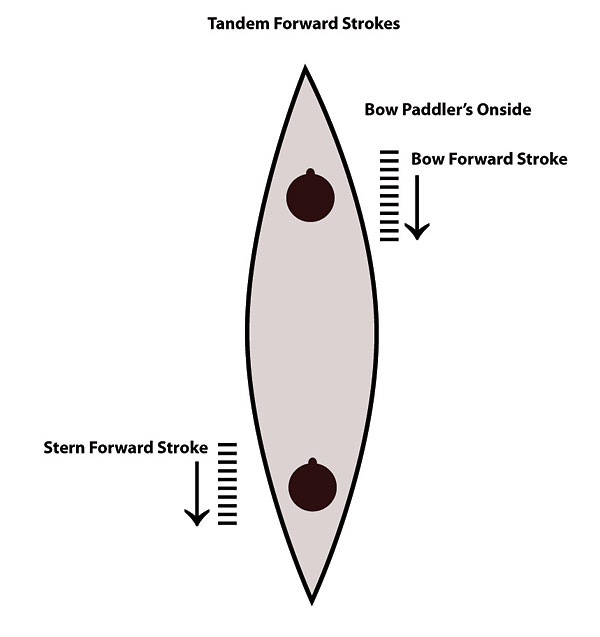 |
J StrokeThe J stroke helps stern or solo paddlers keep the canoe going straight. The J stroke begins with the standard forward stroke. At the end of the forward stroke, twist the paddle with the grip (top) hand so that the thumb of the grip hand is pointing downward. The power face of the paddle is the one pulled against the water in the forward stroke. In the J stroke, at the end of the forward stroke, the power face is turned outward, away from the canoe. Appropriately, the path of the paddle describes a “J.” |
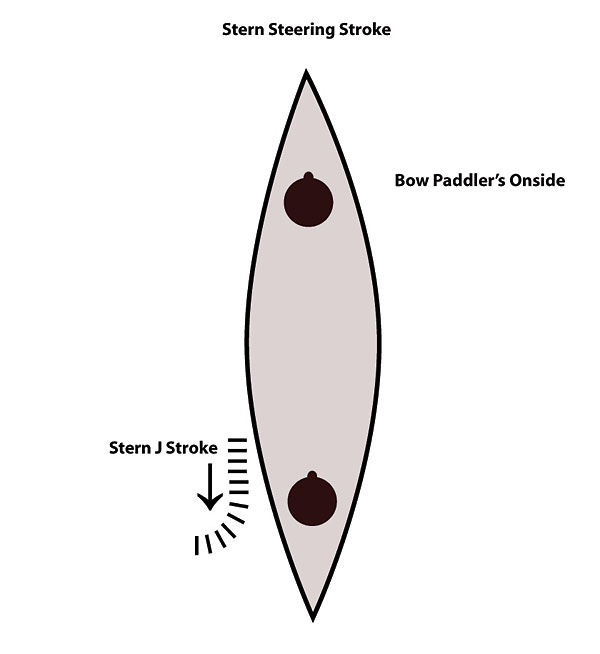 |
Goon StrokeA description of the J stroke would not be complete without describing the goon stroke. This is a true stroke, but not one to use for tripping or flatwater. It is, however, the stroke that most people naturally fall into, thinking they are executing a J stroke. The goon stroke is essentially a forward stroke followed by a stern pry. It is useful in paddling a solo whitewater boat that has very little directional stability. However, it is not a fluid stroke as the power face changes during the stroke. While useful when paddling a solo whitewater canoe, the goon stroke is very fatiguing to use hour after hour. |
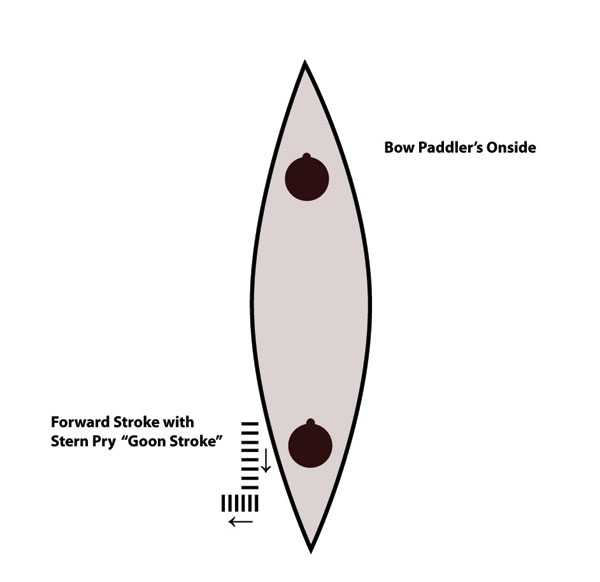 |
Stern SweepIn the stern sweep stroke, the stern paddler reaches out to his or her paddling side with the paddle entering the water at roughly a 90-degree angle to the side of the canoe. The blade is then swept back towards the stern of the canoe. The stern sweep not only propels the canoe forward, but also turns it to the stern paddler’s offside. |
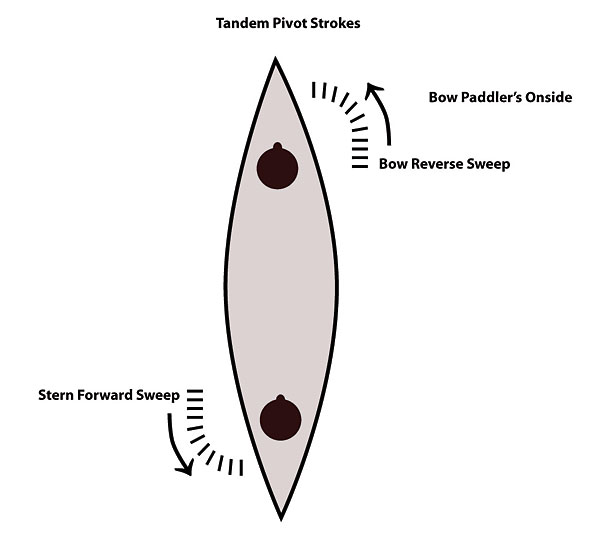 |
Bow SweepMuch like the stern sweep, the bow sweep stroke propels the canoe forward and turns the canoe to the bow paddler’s offside. In this case, the sweep begins with the paddle nearly even with the canoe at the bow, and then sweeps to nearly perpendicular with the canoe to finish the stroke. |
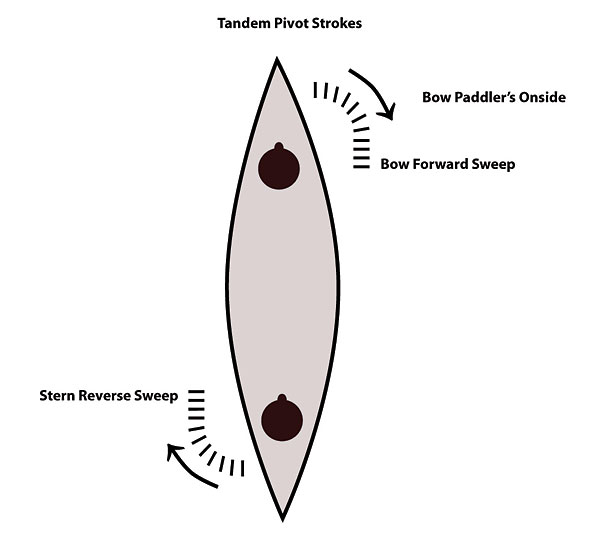 |
Bow and Stern DrawThe draw is an important stroke for both the bow and stern paddlers; the two versions are mirror images. In the draw, the paddler plants the paddle vertically in the water on his or her onside and draws the paddle to the canoe. It is important to immerse the paddle as near to vertical as possible and far enough from the side of the canoe to result in an effective stroke. If both paddlers initiate bow and stern draws with the same amount of power, the canoe will pivot around its center line. |
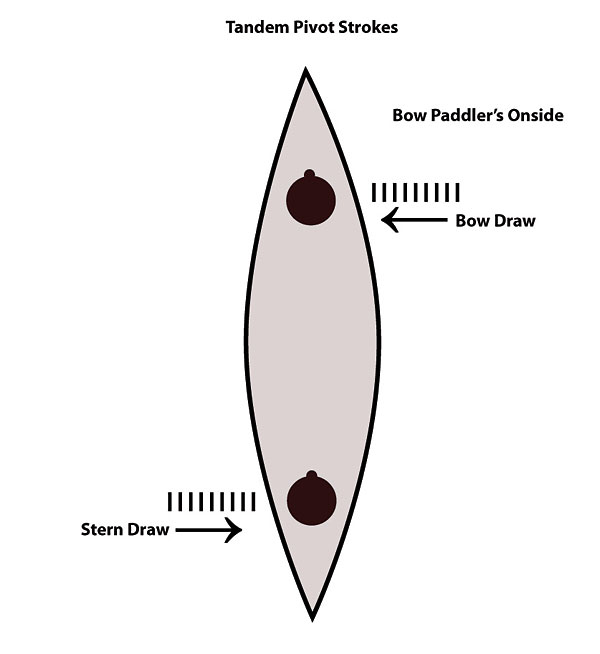 |
Cross Bow DrawAlso called a cross draw, the cross bow draw is commonly used by bow paddlers to help turn the canoe toward their off side. The paddle is swung over to the bow paddler’s offside and a draw is performed. Hand positions do not change. The cross bow draw is a powerful and effective stroke once it is mastered. |
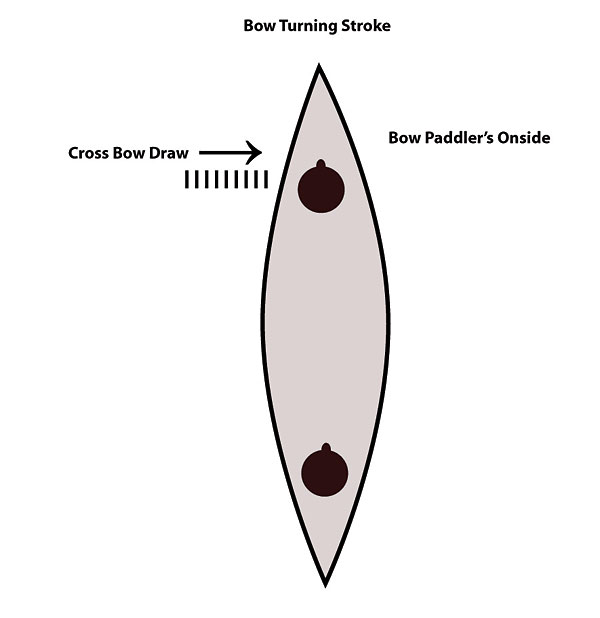 |
Stern and Bow PryThe stern pry is used by the stern paddler to turn the bow of the canoe toward the paddler’s onside. The bow pry is used by the bow paddler to turn the stern of the canoe toward the paddler’s onside. In this stroke the paddle is immersed vertically at the side of the canoe and the paddle shaft is pivoted or pried off the gunnel, moving the blade outward. |
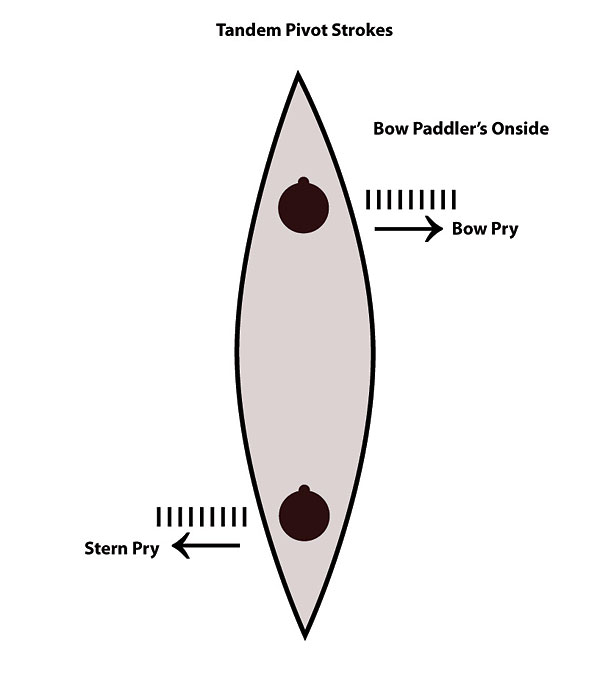 |
Going Backward
|
|
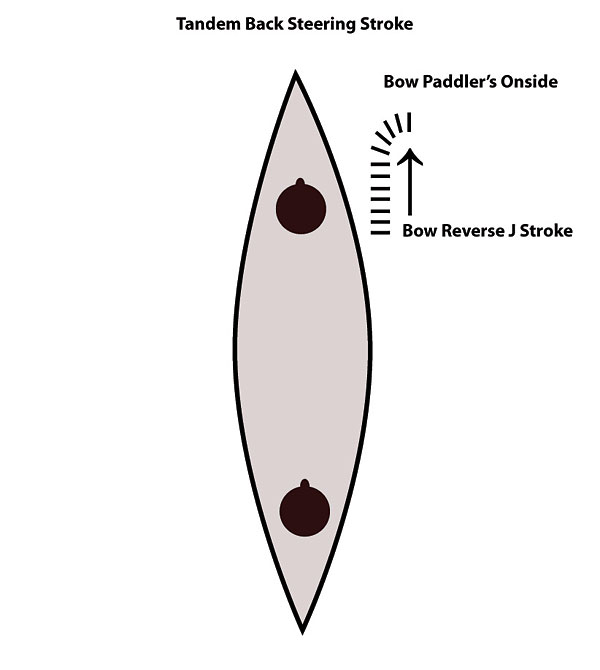 |
Stern and Bow Back StrokeThe stern and bow back strokes are used to slow down the canoe when coming into a landing. The back stroke is the reverse of the standard forward stroke. |
Bow Reverse J StrokeAs its name implies, the bow reverse J stroke is a reverse of the stern J stroke. It begins with a back stroke and finishes with a J, pivoting the blade of the paddle away from the bow with the power face facing away from the canoe. It is an important stroke to use in back ferrying on faster moving water. |
The paddling strokes above are the basic ones you'll need to know for any canoe trip. It is important to understand that often paddlers employ strokes in combination. For example, the bow paddler might employ a cross draw, while the stern paddler employs a stern sweep to turn the canoe.
For more detailed and advanced paddling instruction, consult your local canoeing clubs and quality paddling publications.
(All illustrations by Sarah Lampe.)

 by Erich Volkstorf
by Erich Volkstorf
